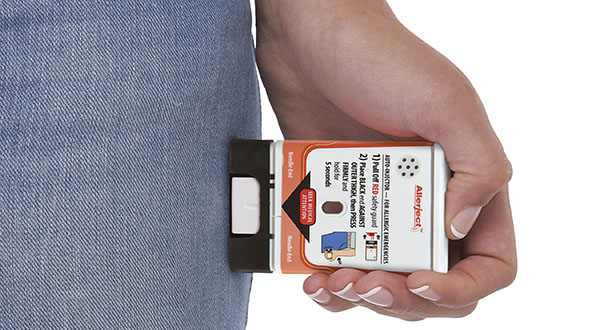NC – According to Health Canada, close to 6 percent of Canadian children have a food allergy.
Greater public awareness and understanding of anaphylaxis could help save lives.
Elizabeth Monk, a spokesperson for Allerject, notes that the seriousness of anaphylaxis is generally not well understood. “Many people don’t know that it can be life-threatening. And many are uncertain about how allergic reactions are triggered, how to spot the symptoms, and what to do in an emergency,” she says.
How much do you know about severe allergic reactions? Take the Allergy Quiz. You’ll find the full quiz at www.allerject.ca as well as additional resources and information about anaphylaxis.
Here are a few sample questions to get you going.
1. Which of the following is among the 10 priority food allergens most frequently associated with anaphylaxis?
(a) Peanuts
(b) Mustard
(c) Soy
(d) All of the above
2. Which of the following is NOT a typical symptom of a severe allergic reaction?
(a) Hives
(b) Nose bleed
(c) Shortness of breath
3. Auto-injectors are used to inject epinephrine into?
(a) The muscle of the mid outer thigh
(b) A vein
(c) The buttocks
4. In addition to certain foods, anaphylaxis can also be triggered by?
(a) Exercise
(b) Latex
(c) Certain medications
(d) All of the above
(e) None of the above
5. After an individual has been injected with epinephrine, he/she must?
(a) Be immediately transported to hospital, ideally by ambulance
(b) Take antihistamine
(c) Drink plenty of fluids
6. In cases of auto-injector use, what percentage of injections are administered by someone other than the person having the reaction or the parent of an anaphylactic child?
(a) 31%
(b) 12%
(c) 6%
Answers:
1 (d)—(Source: Health Canada, www.hc-sc.gc.ca/fn-an/securit/allerg/fa-aa/index-eng.php)
- 2 (b); 3 (a); 4 (d); 5 (a)—(Source: Anaphylaxis in Schools & Other Settings, 2nd Edition Revised, the Canadian Society of Allergy and Clinical Immunology)
6 (a)—(Source: Ipsos Healthcare, Allerject Patients Study, June 2014)
 Pride News Canada's Leader In African Canadian & Caribbean News, Views & Lifestyle
Pride News Canada's Leader In African Canadian & Caribbean News, Views & Lifestyle





